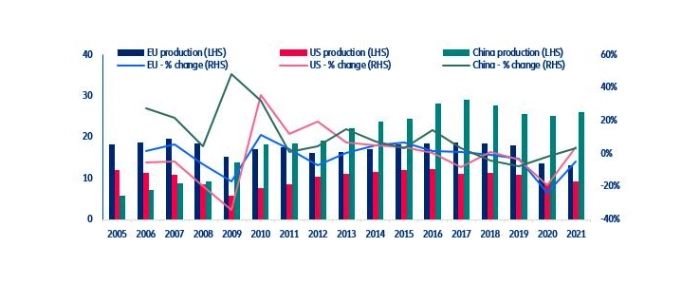
Missing chips cost EUR 100 billion to the European auto sector
The chip shortage hit Europe hard, but the hardest blow was probably dealt to the European automotive industry.
The automotive industry has been the number one casualty of the global semiconductor crunch, according to economic researchers at Allianz. The researchers estimate that the shortage led to a shortfall of about 18 million vehicles around the world.
Europe’s automotive sector has – according to a report – been hit the hardest, and the region's weak semiconductor sector did not help in that matter. Allianz estimates that the semiconductor crunch will cost Europe about EUR 100 billion over 2021 and 2022.
As vehicles will only get more ‘semi-intensive’, the automotive sector will need policy support to avoid more losses in the future. However, support should focus on segments where Europe is both a large manufacturing and final market, in other words, automotive and not consumer electronics.
At the start of the pandemic, automakers and automotive suppliers prepared for rough times by drastically reducing semiconductor stockpiles and orders. The industry realized that chip makers had moved manufacturing resources to end-markets with increasing demand, such as computers and data centers, leaving little capacity for the automotive sector when demand for automobiles rebounded quicker than anticipated in the second half of 2020. With a cumulative output shortfall of more than 18 million cars globally, automotive production is still far behind its 2019 level, some two years after the first signs of a semiconductor shortage.
Comparatively speaking, the situation has been worse in Europe, where, unlike in China or North America, car manufacturing reached an all-time low of 13 million units in 2021. The production recovery was once again hampered by new supply-chain tensions brought on by lockdowns in the larger Shanghai region and Russia's invasion of Ukraine after signs of progress in late 2021 and Q1 2022.
